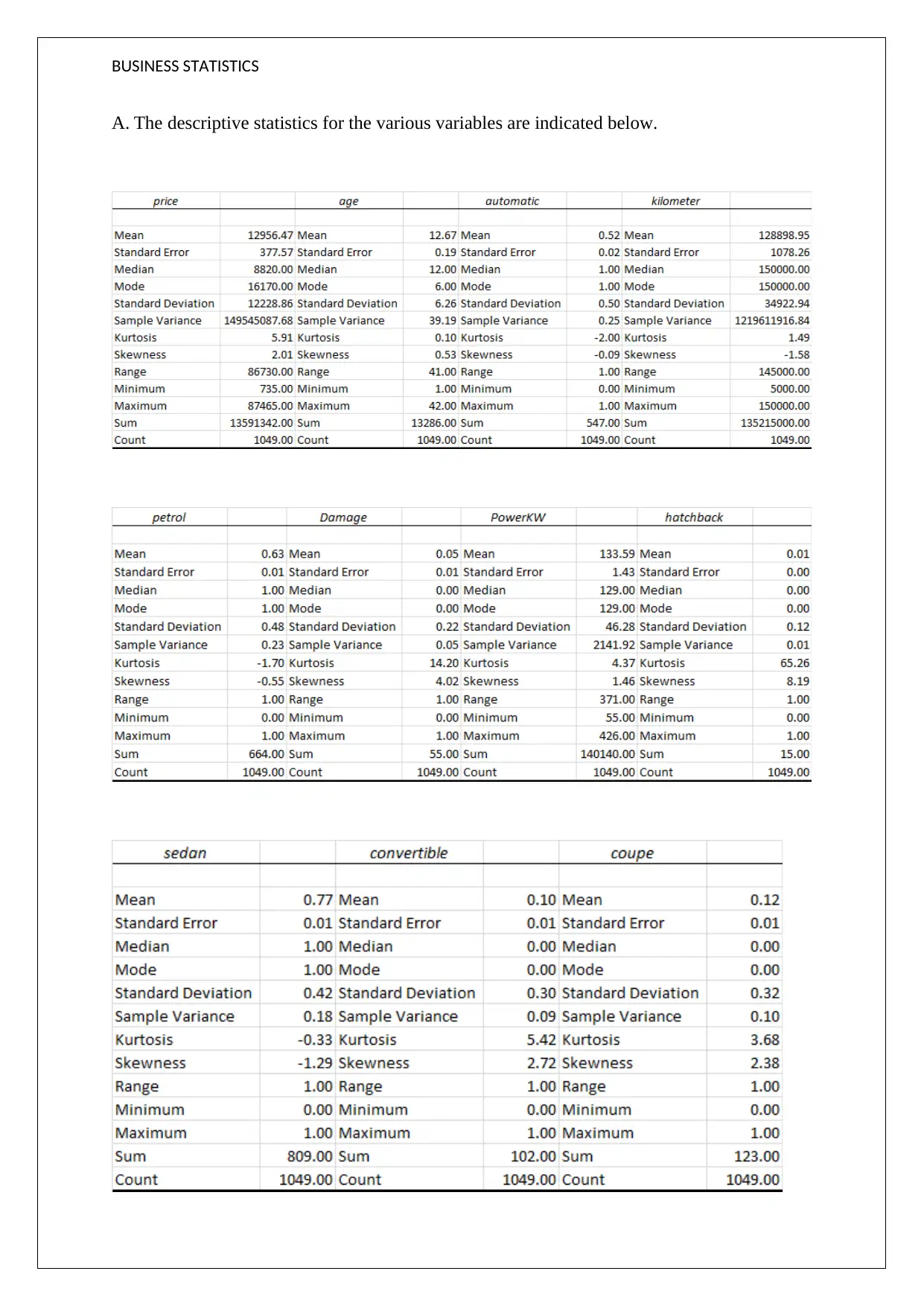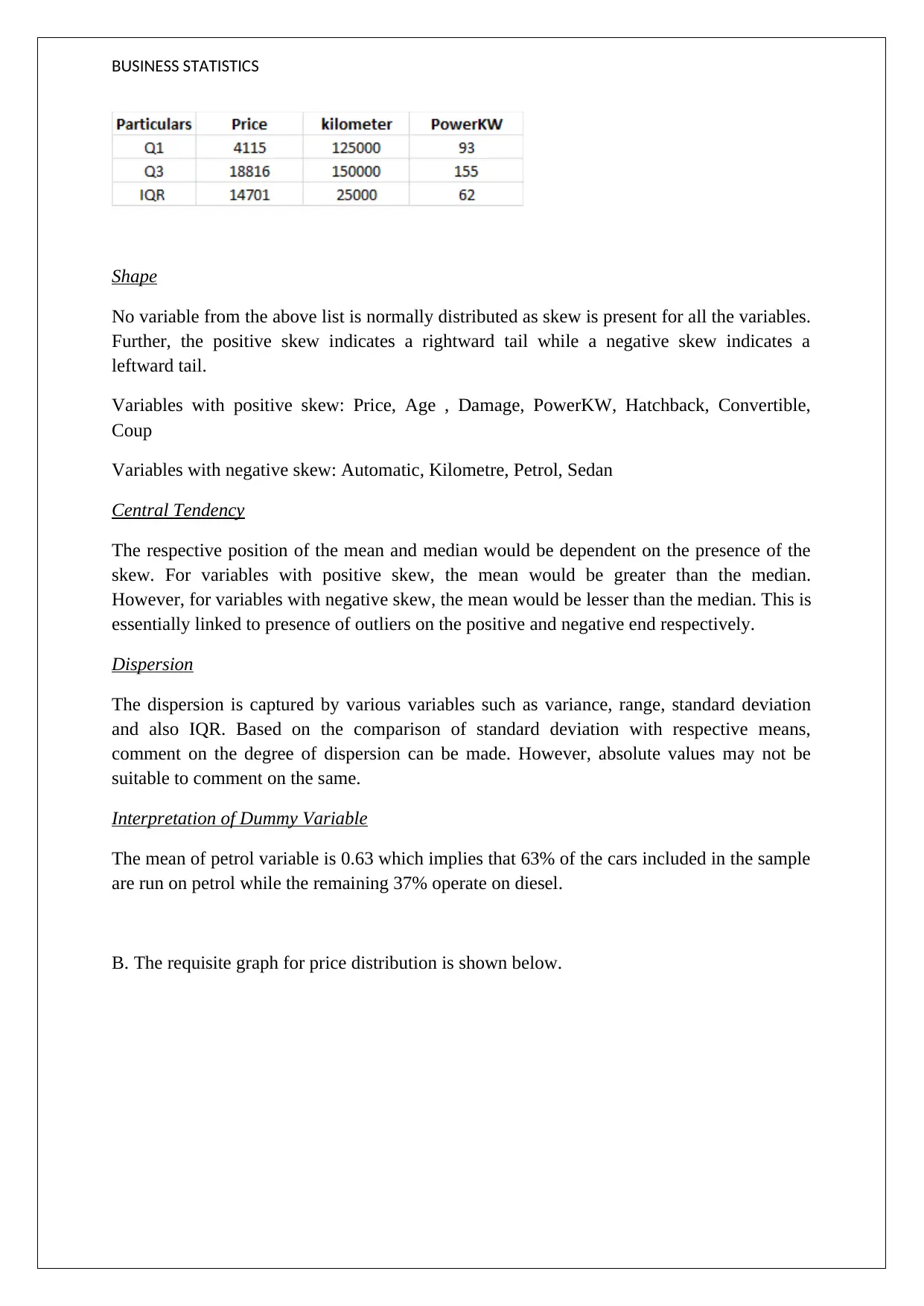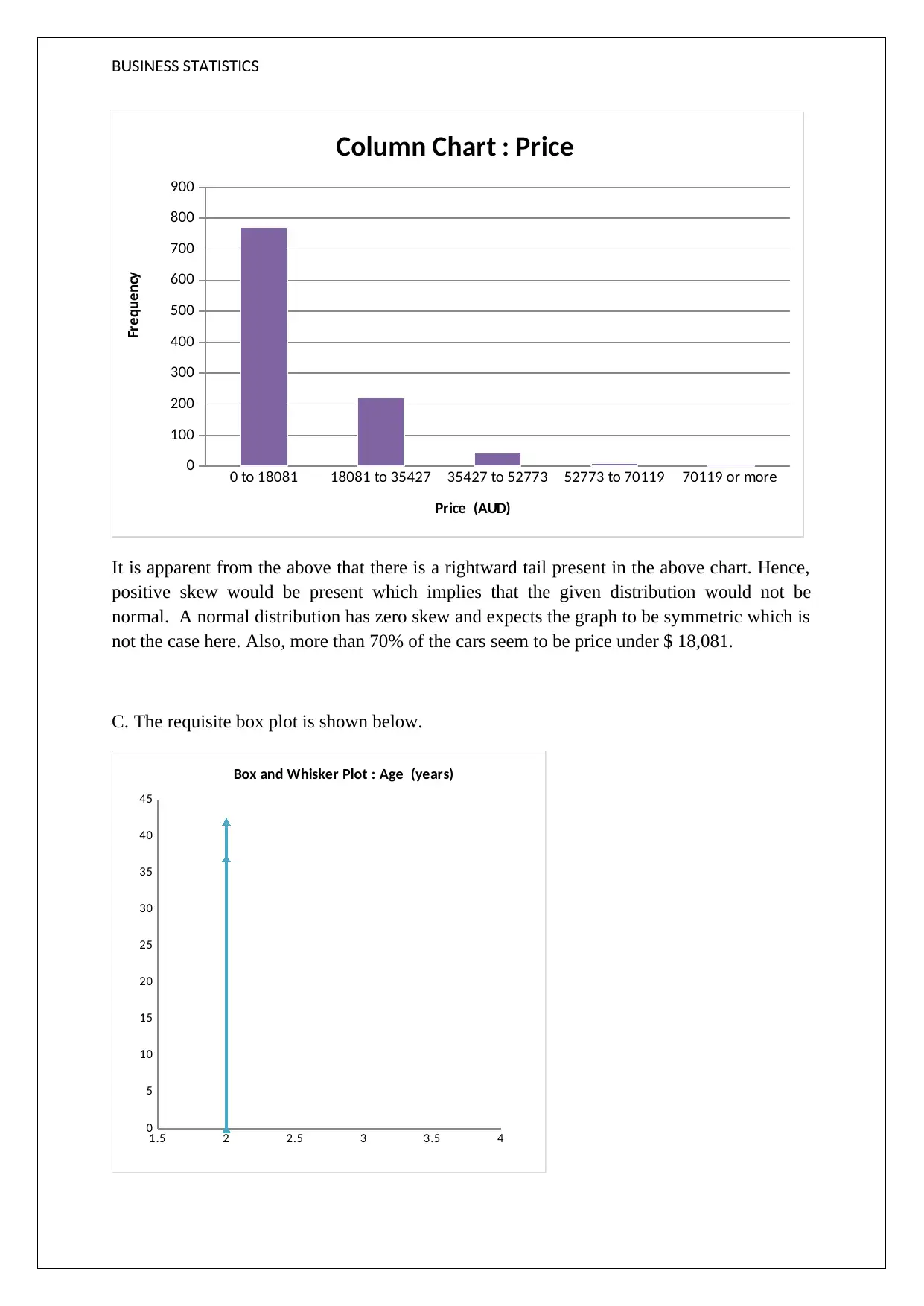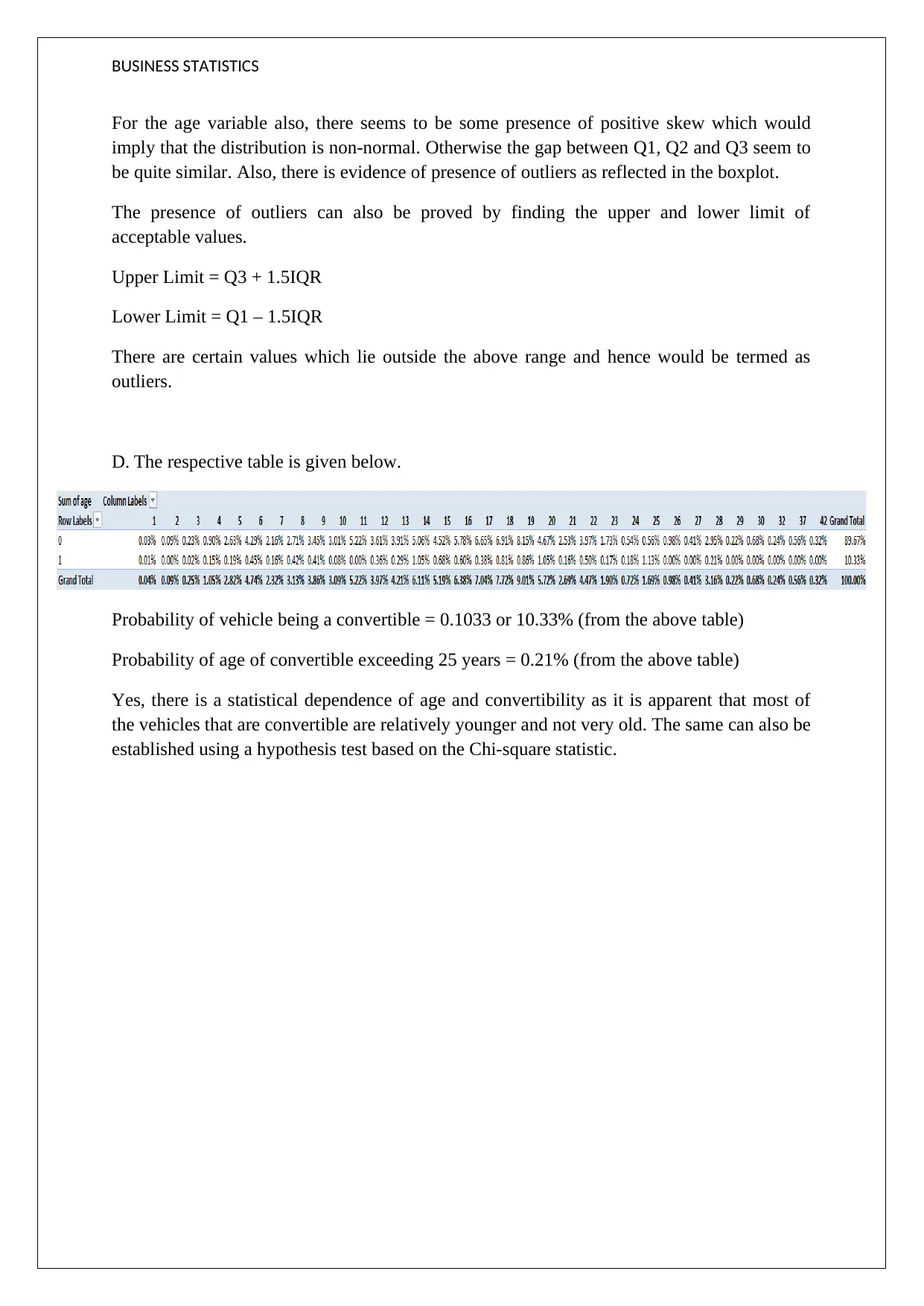BUSINESS STATISTICS Analysis: Skewness and Descriptive Measures
VerifiedAdded on 2020/05/11
|4
|521
|118
Homework Assignment
AI Summary
The homework assignment delves into the descriptive statistics of various business-related variables, highlighting their distribution characteristics. It explains that none of the listed variables follow a normal distribution due to the presence of skewness, which is either positive or negative indicating rightward or leftward tails respectively. The analysis includes central tendency measures where mean and median positions are discussed in relation to skewness, dispersion metrics like variance and standard deviation, and interpretations involving dummy variables such as car fuel types. Graphical representations including price distribution graphs and box plots illustrate skewness and outliers, reinforcing the statistical findings with calculations of upper and lower limits for outlier identification. The assignment concludes by examining probabilities related to vehicle characteristics, like convertibility, showing dependence between age and convertibility through a Chi-square hypothesis test.
1 out of 4











![[object Object]](/_next/static/media/star-bottom.7253800d.svg)